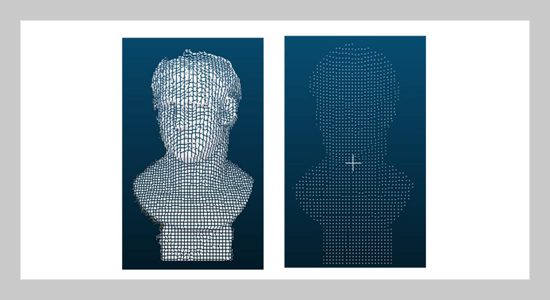REFERENCES
- [1]Rusu, R.B., Z.C. Marton, N. Blodow N, et al. (2008) “Persistent Point Feature Histograms for 3D Point Clouds,” In Proceedings of the 10th International Conference on Autonomous Systems, Baden Baden, Germany, 119-128.
- [2]He, W., Z.J. Li, C.L.P. Chen, (2017) “A Survey of human-Centered Intelligent Robots: Issues and Challenges,” IEEE/CAA Journal of Automatica Sinica, 4(4), 602-609.
- [3]Rusu, R.B., N. Blodow, Z.C. Marton, et al., (2008) “Aligning Point Cloud Views using Persistent Feature Histograms,” In Proceedings of International Conference on Intelligent Robots and Systems, IEEE, Nice, France, 3384-3391.
- [4]Rusu, R.B., N. Blodow, M. Beetz, (2009) “Fast Point Feature Histograms (FPFH) for 3D Registration,” In Proceedings of IEEE International Conference on Robotics and Automation, IEEE, 3212-3217.
- [5]Zhang, L., L.T. Jiang, (2017) “Research on 3D Object Recognition Based on RealSense,” Information Technology, 10, 78-83.
- [6]Huang, J., S. You, (2013) “Detecting Objects in Scene Point Cloud: A Combinational Approach,” In Proceedings of International Conference on 3dtv-Conference. IEEE, 175-182.
- [7]Nasab, S.E., S. Kasaei, E. Sanaei, et al., (2014) “Multiview 3D Reconstruction and Human Point Cloud Classification,” In Proceedings of 22nd Iranian Conference on Electrical Engineering, Tehran, Iran, 1119-1124.
- [8]Ai, D., M. Wang, G.B. Ni, (2016) “Research and Realization of 3D Restruction Based on FPFH,” Computer Measurement and Control, 24(7), 232-236.
- [9]Ye, A.F., S.R. Gong, Z.H. Wang, et al., (2009) “Point Cloud Density Extraction Based on Stochastic Distribution Estimation,” Computer Engineering, 35(4), 183-186.
- [10]Xu, X.Y, T.Y. Zhong, (2006) “Construction and Realization of Cubic Spline Interpolation Function,” I. Automation, 25(11),76-78.
- [11]Chen, Y.T., J. Xiong, W.H. Xu, et al., (2019) “A Novel Online Incremental and Decremental Learning Algorithm Based on Variable Support Vector Machine,” Cluster Computing, 22(8), S7435-7445.
- [12]Yeh, A.R., C. Chen, T.Y. Lim, et al., (2017) “Semantic Image Inpainting with Deep Generative Models,” In Proceedings of 2017 IEEE Conference Computer Vision and Pattern Recognition, IEEE, 6882-6890.
- [13]Gao, G.W., D. Zhu, M. Yang, et al., (2018) “Face Image Super-Resolution with Pose Via Nuclear Norm Regularized Structural Orthogonal Procrustes Regression”, Neural Computing and Applications. https://doi.org/10.1007/s00521-018-3826-1.
- [14]Chen, Y.T., J. Wang, R.L. Xia, et al., (2019) “The Visual Object Tracking Algorithm Research Based on Adaptive Combination Kernel,” Journal of Ambient Intelligence and Humanized Computing, 10(12), 4855-4867.
- [15]Tu, Y., Y. Lin, J. Wang, et al., (2018) “Semi-Supervised Learning with Generative Adversarial Networks on Digital Signal Modulation Classification,” Computers Materials & Continua, 55, 243-254.
- [16]Chen, Y.T., R.L. Xia, Z. Wang, et al., (2019) “The Visual Saliency Detection Algorithm Research Based on Hierarchical Principle Component Analysis Method,” Multimedia Tools and Applications. https://doi.org/10.1007/s11042-019-07756-1.
- [17]Chen, Y.T., J. Wang, X. Chen, et al., (2019) “Single-Image Super-Resolution Algorithm Based on Structural Self-Similarity and Deformation Block Features,” IEEE Access, 7, 58791-58801.
- [18]Chen, Y.T., J. Wang, X. Chen, et al., (2019) “Image Super-Resolution Algorithm Based on Dual-Channel Convolutional Neural Network,” Applied Sciences, 9, 2316.
- [19]Bengio, Y.S., A. Courville, P. Vincent, (2013) “Representation Learning: A Review and New Perspectives,” IEEE Transactions on Pattern Analysis and Machine Intelligence, 35(8), 1798-1828.
- [20]Tang, .F, Y. Ying, J. Wang, et al., (2004) “A Novel Texture Synthesis Based Algorithm for Object Removal in Photographs,” Springer, Berlin Heidelberg.
- [21]Chen, Y.T., W.H. Xu, J.W. Zuo, et al., (2019) “The Fire Recognition Algorithm using Dynamic Feature Fusion and IV-SVM Classifier,” Cluster Computing, 22(10), S7665-7675.
- [22]Gao, G.W., J. Yang, S.S. Wu, et al., (2015) “Bayesian Sample Steered Discriminative Regression for Biometric Image Classification,” Applied Soft Computing, 37, 48-59.
- [23]Gao, G.W., J. Yang, X.Y. Jing, et al., (2017) “Learning Robust and Discriminative Low-rank Representations for Face Recognition with Occlusion,” Pattern Recognition, 66, 129-143.
- [24]Gao, G.W., Y. Yu, M. Yang, et al., (2020) “Cross-Resolution Face Recognition with Pose Variations Via Multilayer Locality-Constrained Structural Orthogonal Procrustes Regression,” Information Sciences, 506, 19-36.
- [25]Yu, Y., S.H. Tang, K. Aizawa, et al., (2019) “Category-Based Deep CCA for Fine-Grained Venue Discovery From Multimodal Data,” IEEE Transactions on Neural Network Learning System, 30(4), 1250-1258.
- [26]Chen, Y.T., J. Wang, S.J. Liu, et al., (2019) “The Multi-Scale Fast Correlation Filtering Tracking Algorithm Based on a Features Fusion Model,” Concurrency and Computation: Practice and Experience, 2019, DOI:10.1002/cpe.5533.









